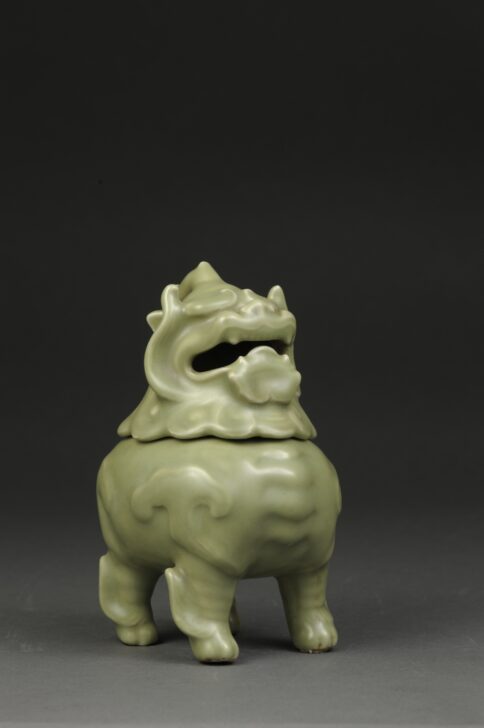Incense Burner

Description
Subject Matter:
Qilin, Wade-Giles ch't-lin, in Chinese mythology, the unicorn whose rare appearance often coincides with the imminent birth or death of a sage or illustrious ruler. (The name is a combination of the two characters qi “male,” and lin, “female.”) A qilin has a single horn on its forehead, a yellow belly, a multicoloured back, the body of a deer, and the tail of an ox. Gentle of disposition, it never walks on verdant grass or eats living vegetation.
The first qilin is said to have appeared in the garden of the legendary Huangdi (Yellow Emperor) in 2697 BCE. Some three centuries later a pair of qilin were reported in the capital of Emperor Yao. Both events bore testimony to the benevolent nature of the rulers.
https://www.britannica.com/topic/qilin
Physical Description:
Celadon incense burner in the shape of Qilin with a removable top.
Usage Rights:
If you are interested in using an image for a publication, please visit https://umma.umich.edu/request-image/ for more information and to fill out the online Image Rights and Reproductions Request Form.